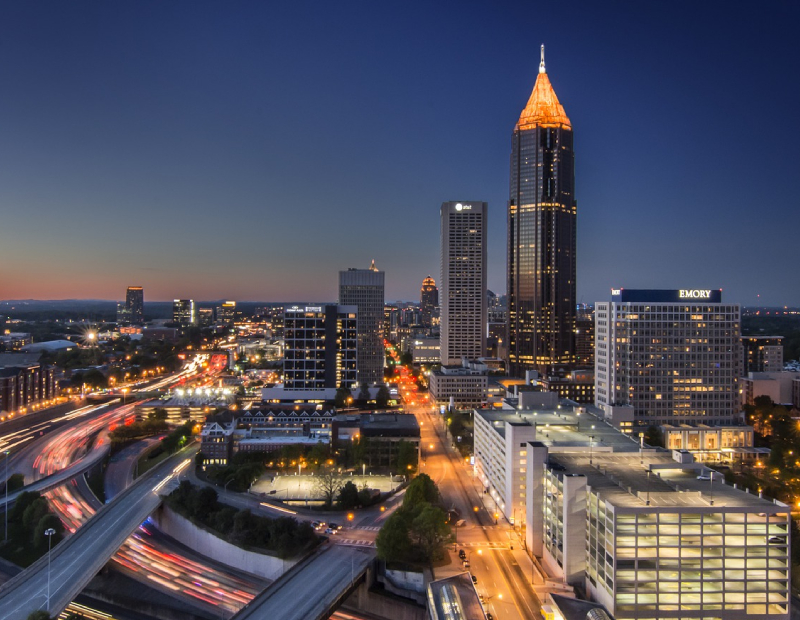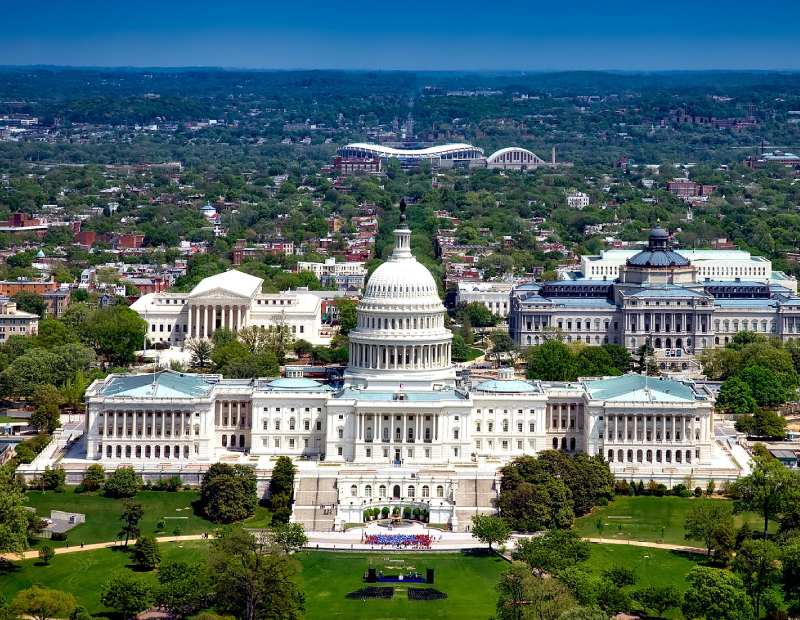Top 5 Markets for Office Deliveries
The metros account for almost 30 percent of the square footage that reached completion over the first eight months of 2020.
Office deliveries this year were expected to surpass previous years, as demand for high-quality space was on the rise in most established office markets. But as the pandemic hit the country at the end of the first quarter, some plans were inevitably changed. However, in places where commercial construction activity was allowed to continue during lockdowns, deliveries remained quite high. As a result, some 42 million square feet came online in the U.S. over the first eight months of 2020, according to Yardi Matrix data.
The five metros on this list account for almost 30 percent of the square footage that reached completion this year. However, if we look at deliveries as a percentage of existing stock, smaller markets emerge. For example, in Queens, five projects totaling 1.5 million square feet represent more than 6 percent of the metro’s inventory.
5. Atlanta
Atlanta’s office market, and its overall economy, had witnessed tremendous growth in pre-pandemic times, bolstered by the metro’s diversified business environment. Metro Atlanta continued its upward demographic trend, adding 75,000 residents in the 12 months ending in July 2019, according to estimates. This resulted in a strong development pipeline for both the office and multifamily sectors, driven by robust tenant demand. But as the coronavirus outbreak reached the country, Atlanta’s economy took a hit, losing some 140,000 jobs in the 12 months ending in July. All employment sectors contracted, with losses ranging from 0.1 percent for government positions to 15.5 percent for leisure and hospitality jobs.
As construction activity was deemed essential during the state’s stay-at-home order in March and April, projects underway weren’t significantly affected. As a result, developers completed 15 projects during the first eight months of the year, totaling 2.1 million square feet and equal to 1 percent of Atlanta’s existing inventory. Anthem’s 360,000-square-foot Anthem Technology Center was the largest project to reach completion. In 2018, the developer secured a $109.8 million construction loan from Truist Bank. The health-care company occupies the 21-story building at 740 W. Peachtree St. NW in Midtown Atlanta.
4. Chicago
Thanks to the expansion of its urban core’s office inventory, Chicago enjoyed positive economic and demographic growth before the pandemic. However, as the COVID-19 crisis forced businesses to temporarily close and people to shelter in place, the economic impact on the metro was significant. The metro’s employment market contracted by more than 300,000 positions in the 12 months ending in July, with all sectors affected. Leisure and hospitality jobs decreased by 27.5 percent, or 113,000 positions, while others suffered less severe blows. For instance, losses for office-using sectors ranged from 2.6 percent, or 7,300 jobs, for financial activities to 6.8 percent, or 48,500 positions, for professional and business services.
In Chicago, developers kept busy during the first eight months of 2020. In total, they completed 13 projects with a combined square footage of 2.2 million. So far, the largest project to come online this year has been The Howard Hughes Corp.’s 1.6 million 110 North Wacker. Constructed with the help of a $558.9 million loan from Bank of America, the 55-floor building is leased, among others, by Perkins, Lincoln International and No18. Situated in the city’s central business district, the property was designed to meet LEED Gold standards and is the largest office project to come online in the submarket in more than two decades.
3. Boston
While population growth has slowed significantly over the past two years, Boston remained an attractive destination for highly qualified workers thanks to its diversified economy. As a result, although its main economic drivers took a hit from the pandemic, the metro is in a better position compared to neighboring cities. Measures meant to prevent the spread of the virus taken in March and April resulted in the cancellation or postponement of all large-scale events in Boston. This contributed to a sharp decline in leisure and hospitality jobs—the segment shrank by more than 145,000 positions, or 35.5 percent, in the 12 months ending in July. In total, the metro lost more than 410,000 positions during the same period.
Although Boston had imposed some restrictions on nonessential construction during the state’s stay-at-home order, developers completed a total of 2.4 million square feet year-to-date through August, representing 0.9 percent of the metro’s existing stock. The two largest projects to reach completion during the first eight months of 2020 were both situated in Cambridge, Mass., one of the most active office submarkets in Boston. DivcoWest completed the 460,000-square-foot Cambridge Crossing – JK Site, occupied by Philips and Cerevel Therapeutics. Some 7 miles away, The Bulfinch Cos. expanded its Cambridge Discovery Park with the addition of a 286,000-square-foot building located within an Opportunity Zone. Additionally, as of June, some 12.9 million square feet was underway throughout the metro, with almost 3 million square feet expected to be delivered as early as year-end.
2. Dallas
Due to efforts to diversify its economy in recent years, the metro’s population increased by more than 115,000 residents in the 12 months ending in July 2019. Dallas strengthened its financial activities employment sector, adding the country’s highest number of jobs in the industry in 2019. As a result, while almost all other employment sectors contracted in the 12 months ending in July, financial activities jobs rose 3.3 percent, adding 8,400 positions, with construction jobs up 1.8 percent, or 2,700 positions. By comparison, the leisure and hospitality sector lost 22,100 jobs, equal to a 20.3 percent drop. In total, the metro lost 101,000 jobs during the same period.
It’s not surprising that the construction employment sector continued its upward trend, since Texas classified construction as an essential activity during its stay-at-home order, which was in effect until the end of April. Developers completed 2.6 million square feet of office space year-to-date through August, equal to 0.8 percent of existing stock. So far, the largest office project delivered this year has been the 555,000-square-foot, Phase I of the Charles Schwab Westlake Campus. The two-building low-rise is the fifth-largest office project in the Westlake submarket of Dallas and the largest one to come online in two decades. The second phase, an adjacent 620,000-square-foot project, is already underway and is expected to reach completion as early as next year.
1. Washington, D.C.
Thanks to its robust government employment sector, Washington, D.C., has not been as strongly impacted by the pandemic as other metros on this list. In total, the metro lost almost 250,000 jobs in the 12 months ending in July, with tourism-related positions accounting for almost 43 percent of that. It’s not surprising, considering the metro imposed a stay-at-home order at the end of March, resulting in dramatic declines in hotel occupancy and the temporary closures of many businesses, including restaurants. But as the metro eased restrictions, the economy started to recover. According to estimates, if the unemployment rate stood at 10 percent in April, it declined to 8 percent by July, equal to 250 basis points below the national average.
Developers completed 10 office projects totaling 3 million square feet in Washington, D.C., in the first eight months of 2020, equal to 0.7 percent of stock. In the metro’s NoMa submarket, MetLife Real Estate Investment expanded its footprint with the completion of a 540,000-square-foot project. Developed with the help of a $168.5 million construction loan from JPMorgan Chase, the property was designed to meet LEED Silver standards. The 11-story Sentinel Square III is the third-largest office property in the submarket and the company’s second-largest building in D.C.










You must be logged in to post a comment.